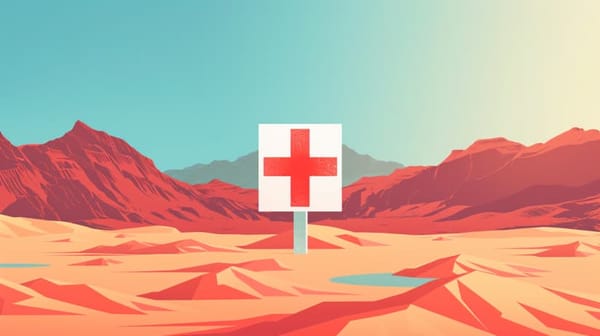Introduction
All you need to know about the differences between water fasting and dry fasting. Dry fasting is a secretive art of fasting that is slowly gaining popularity. It breaks my heart to know that there are so many people who could have improved their health, armed with this knowledge.
The common saying that we’ve all heard before says that you can only go 3 days without water. Dry fasters have proven this wrong over and over again. Knowing this, we need to dive deeper between both wet and dry fasts. We’ll analyze dry fasting vs water fasting in this article.
What is dry fasting?
Dry fasting is a type of fasting where individuals abstain from both food and water for a certain period. Unlike traditional fasting, which restricts food intake, or water fasting, which restricts water intake, dry fasting requires the body to rely on its internal water reserves and metabolic reactions for energy. With roots dating back to ancient times for religious and spiritual purposes, dry fasting has potential health benefits such as reducing inflammation, improving metabolic health, and increasing longevity.
However, the risks, including dehydration, kidney stones, and urinary tract infections are there if you don't approach it correctly. Dry fasting durations vary, with some people opting for 24-hour fasts while others choosing longer periods.
It is crucial to stay hydrated before and after dry fasting and to consult with a medical professional beforehand, especially if one has underlying health conditions. When done properly, dry fasting can contribute to overall physical and mental well-being. It is the strongest type of fasting available, and some healing mechanisms can only occur while dry fasting. A 7-day dry fast is comparable to a 21-day water fast.
Five Facts About Dry Fasting vs Water Fasting:
✅ Dry fasting involves abstaining from both food and water, while water fasting involves drinking only water and abstaining from food.
✅ Dry fasting is believed to have more intense detoxification benefits than water fasting, but can also be more challenging to undertake.
✅ Water fasting is generally considered safer and easier to complete than dry fasting, and is often used for short-term weight loss or as a therapeutic intervention.
✅ Both dry fasting and water fasting can lead to side effects such as fatigue, headache, and lightheadedness, especially for beginners.
✅ It is important to consult with a healthcare professional before attempting either type of fasting, especially for those with underlying health conditions.
Dry fast or water fast?
If you’re considering trying a fasting diet and intermittent fasting is too easy, you may be wondering whether to do a soft dry fast or a water fast.

So which is right for you? If you’re looking to cleanse your body and reset your system, a water fast may be the way to go. But if you’re serious about shedding some pounds, a dry fast may be more effective. Ultimately, the decision is up to you. If you're worried about dehydration on a dry fast, then rest assured you're not the only one. The topic of dehydration needs to be discussed more deeply and you can read about it here.
I used dry fasting to heal my Long Covid that the medical community either ignored or pretended did not exist. If I had the dry fasting experience with me at the start of the pandemic, I could have prevented a lot of damage to my body and a lot of stress. This is coming from someone who has water fasted for well over 13 years prior to the pandemic. I believed that water fasting was the ace in my pocket, but boy was I mistaken. Read further below about dry fasting and the hyperosmotic environment which correlates to microtubule repair and autophagasomal clusters.
Choosing between Dry Fasting and Water Fasting
Choosing Your Fasting Method: Dry or Water?
Fasting can be a powerful practice for health, but choosing the right method can make all the difference. Here are six factors to consider when deciding between dry fasting and water fasting:
- Length of time: Dry fasting is typically shorter than water fasting due to the lack of hydration, so consider how long you want to fast.
- Health conditions: Dry fasting is not recommended for those with certain health conditions, so consult with your doctor before choosing a method.
- Goals: Dry fasting may have a more immediate impact on weight loss and detoxification, while water fasting may have longer-lasting effects on overall health.
- Experience level: Dry fasting can be more challenging and should only be attempted by those with previous fasting experience.
- Comfort level: Water fasting may be easier to manage due to the hydration it provides, while dry fasting can be more mentally challenging.
- Lifestyle fit: Consider your daily routine and whether dry or water fasting would be more feasible and comfortable for you.
It's important to note that while dry fasting may have unique benefits, it also carries potential risks and should only be attempted with caution and proper guidance.
Beyond these factors, it's worth noting that fasting is a deeply personal practice and what works for one person may not work for another. Listen to your body and prioritize your overall health and well-being when choosing your fasting method.
In a recent study, a woman tried both dry and water fasting for various reasons and found that both methods had unique benefits for her. While dry fasting was more challenging, it also helped her focus and boost her energy levels, while water fasting had longer-lasting effects on her overall health and well-being.
Dry Fasting vs. Water Fasting Comparison
Dry fasting is a type of fasting that involves abstaining from both food and water whereas water fasting entails only avoiding food and consuming water. To better understand the differences between these two types of fasting, we have created a comparison table.
| Aspect | Dry Fasting | Water Fasting |
|---|---|---|
| Level of Intensity | High | Moderate |
| Weight Loss | Rapid | Slower |
| Hydration Level | Reduced | Maintained |
| Benefits | Increased Healing and Detoxification | Improved Gut Health and Weight Loss |
| Duration | Shorter | Longer |
It's worth noting that dry fasting is a more intense form of fasting that can lead to rapid weight loss and increased detoxification.
Dry Fasting vs Water Fasting and Dehydration
Dry fasting speeds up the process of metabolic water creation. This is the body's natural way of creating its own water. Your body can create water from both proteins and fat. Dry fasting has shown that it can produce up to 6x more metabolic water than normal processes.
Look at the study below and witness how water fasting actually kept most of the fat on the zebra finches, as opposed to the ones who dry fasted. This means that maintaining high water intake actually slows down fat metabolism and instead speeds up protein metabolism. Uh oh.

These findings are pretty intense. The dry-fasted zebra finches also had a higher water content (% carcass lean mass), than the control study, indicating that metabolic water was more powerful than just average amounts of water throughout the day. Not only that but look at how much lower the total body fat (g) was for the No Food or water group. This indicates that water reserves play a direct role in fat catabolism. This is a two pronged attack. You get to burn fat and at the same time hyper increase your blood ketones which will improve your immune system reaction time and intensity.
Our bodies are more powerful than we think. Science is still lagging behind this information, and may for many years to come. We're starting to see a lot more water-fasting research papers coming out year after year, but even those are limited in the number of days.
It's very hard from both a reporting and ethical perspective to get these trials organizes, approved, funded, and executed correctly. I think it's safe to say that we won't see dry fasting research studies for an even longer time. This is where we must analyze as much anecdotal evidence as possible, and when you decide to give dry fasting a try, make sure you sign up with a mentor.
Please note that everyone’s stages and experiences with dry fasting may vary depending on many factors. For example, the more sick your body is, the more detox symptoms may occur. This is why it is always beneficial to have a coach guide you. Paying a fee to make sure you are properly guided is extremely beneficial, can save you months of trial and error, speed up recovery, efficiency, and prevent damage.

Comparing timelines for Water and Dry fasting
As you get more in touch with your body, you’ll start to understand what’s going on with it better. This can make fasting more successful. Here’s a rundown of what happens to your body hour-by-hour when you fast:
💦 Stages of Water Fasting
This is assuming you are NOT on a keto diet prior to starting your fast
- Day 1 [8 hours] – Your stomach is now empty and blood sugar levels are dropping.
- Day 1 [12 hours] – Most of the food has been burned up. The body is still using sugars and stored glycogen.
- Day 1 [24 hours] – Mild autophagy begins. HGH levels rise. Ketones are present in the blood.
- Day 2 [48 hours] – Moderate autophagy, the immune system is strengthened without having to focus on the digestive system, you may start getting keto flu symptoms.
- Day 3 [72 hours] – DEEP KETOSIS starts and start scaling up until day 6: Autophagy maxes out. The immune system begins to reset and regenerate. This is the difference, in a dry fast you scale until day 3 instead of day 6 thereby getting there at least 2x faster.
- Day 6 [144 hours] – FIRST ACIDOTIC CRISIS BEGINS: Deep healing commences. Urge to eat goes away. The body enters a high enough threshold of acidity that the chain of healing mechanisms are set off. To go through this acidotic crisis, you may have to continue until day 15.

☀️ Stages of Dry Fasting
This is assuming you are NOT on a keto diet prior to starting your fast.

- Day 1 [8 hours] – Your stomach is now close to empty of dietary glucose and blood sugar levels are dropping. Your food has gone through its digestive cycle. See Post-absorptive phase I of Ketosis and Starvation.
- Day 1 [12 hours] – Most of the food has been burned up. The body is still using sugars and stored glycogen. The stored glycogen is ramping up as part of phase II but still in phase I. As the glycogen is released into glucose (glycolysis), the still thinks you have enough liver glycogen so it doesn't worry yet, and engages generic microautophagy, and some macroautophagy.
- Day 1 [24 hours] – Moderate autophagy begins. HGH levels rise. Ketones are present in the blood. Hunger starts to disappear. Notice as the body starts to run out of exogenous water, it is required to produce its own water and must consume fat cells quicker. The body panics. Water is a critical part of the body's metabolic processes. Lucky for us, the innate instinct of the body let's it realize that it needs to start burning fat along with protein. This is a marked difference to water fasting where the body realizes the water stores are NOT under attack, so it does not have to scramble as fast to catabolize fat.
- Day 2 [48 hours] – Autophagy increases drastically, (DEEP KETOSIS)the immune system is strengthened without having to focus on the digestive system, you may start getting keto flu symptoms. The body has entered into full steam ahead for fat burning. This means that the ketone levels in your urine will have skyrocketed in orders of magnitude larger than if you were water fasting. I always advise the fasters that I mentor this. You are sparing more muscle already by day 2 on a dry fast. And this will be reflected in the mirror when you do your check ins. Because the electrolyte stores are being dropped due to no moe glycogen, you will still see larger urine outflow.
- Day 3 [72 hours] – FIRST ACIDOTIC CRISIS: Deep healing commences. The urge to eat goes away. The urge to drink water increases. You can see that the acidotic crisis is achieved much faster than water fasting. Make sure you read more about the acidotic crisis as it is a crucial part of every fast, both water and dry.
- Day 6 [144 hours] – FIRST ACIDOTIC CRISIS ENDS: It is ideal to break your extended dry fast at this stage if you are looking to heal severe disease. This stage will be different for different people based on many factors. It is good to have a coach to help you identify what you should be looking for.
To get a much more detailed report of the stages of dry fasting click here
🕗 200 hour Hard Dry Fast Stages Explained
Benefits of dry fasting vs water fasting
When comparing both dry fast health benefits and water fast health benefits, we start to see a pattern emerge. Both wet and dry fasts wield similar health benefits, but when you don’t eat or drink you start to see some accelerated benefits. Let’s go through the benefits one by one and try to pinpoint at what stage they come into play for both fasts.
Here are six benefits to consider when contemplating which method suits you best:
- Improved digestion and gut health as the digestive system gets a break to rest and heal.
- Rejuvenation of cells and tissues due to an increase in stem cell production.
- Boosts to the immune system as fasting strengthens the body's natural defense mechanisms.
- Weight loss as the body burns stored fat to use as fuel in the absence of food.
- Better mental clarity and focus as fasting decreases inflammation in the brain.
- Increased energy and vitality as the body rids itself of toxins, and hormonal balance improves.
🌊 Benefits of Water Fasting
Water fasting, a type of dietary regimen where one consumes only water for a specific period, has several health benefits associated with it:
- Helps in weight loss.
- Improves insulin sensitivity and lowers the risk of diabetes.
- Promotes cell regeneration and helps maintain healthy skin.
- Increases mental clarity and focus.
Additionally, water fasting aids in reducing inflammation, promoting autophagy, and lowering blood pressure and cholesterol levels.
Furthermore, to reap maximum benefits from the water fast, it's essential to stay well-hydrated before, during, and after the fast. Incorporating light exercises or yoga asanas can also help hasten detoxification.
🌜 Weight loss: dry vs water fast
You will lose more weight dry fasting than water fasting. This is actually surprising to many people because water is a non-caloric drink. The common assumption is that if you are not taking in any calories, you will lose weight based on your expended calories.
It is quite common to lose up to 1kg (2.2lbs) of weight per day on a dry fast. The reasoning behind the greater weight loss is that without endogenous water, your body must find internal reserves of it. Fat cells can produce a lot of water. A common saying is that fat cells are 90% water, which is funny from a scientific perspective, as fat cells contain almost no actual water.
The water is produced when a chemical reaction occurs that splits the fat cell to provide glycerol. The reaction releases more water than a reaction that catabolizes protein. Read about these numbers from this research paper that tested water fasting vs dry fasting on zebra finches. So, by replenishing water stores, your body is forced to consume extra fat cells, and you lose weight VERY quickly.

🦠 Immune system: dry vs water fast
There is some evidence that fasting may help to strengthen the body’s immune system. The theory is that fasting and not eating and/or drinking any water will “reset” the immune system by removing damaged cells. This then allows the body to regenerate new ones.
Additionally, limiting calorie intake has been shown to improve inflammation, which in turn protects the immune system. It is thought that complete caloric restriction would have similar results. Since water fasting stages tend to appear faster than water fasting, we can assume that the immune benefits of dry fasting are more pronounced if done in the same period of time.
In the 2014 study, Valter Longo and colleagues at USC found that fasting lowered white blood cell counts, which in turn triggered the immune system to start producing new white blood cells. White blood cells (or lymphocytes) are a key component of your body's immune system.
A lot of people swear by dry fasting to quickly put a stop to viral illnesses. The jury's out on this, but from the high amount of anecdotal evidence, it seems that if you can catch the symptoms quickly you can stop it in its tracks.
The dry fast creates such an inhospitable environment and deploys a massive amount of ketones into the blood 3x faster than a water fast would. This in turn acidifies the body, thereby energizing and activating lysosomes which can quickly target the virus that is still in its infancy. Think of it like dealing with a zombie infection before it gets out of hand.
👻 Spiritual: dry vs water fast
Some people say that fasting can also help to enhance spirituality. This may be related to the practice of religious fasting. Supporters have reported several spiritual benefits, including increased gratitude, deeper faith, improved awareness, and opportunity for prayer.
Allegedly, both religious and non-religious people have reported experiencing spiritual benefits after fasting. The defining difference between wet and dry fasting when it comes to spirituality is that in one you build a relationship to not eating, while the other does a more aggressive approach that builds a relationship to not drinking water. Water is slightly milder, while dry is slightly more aggressive.
This aspect is also correlated to the intensity of dry fasting. A lot of dry fasters enjoy being very mindful during their fast and connecting with a higher self. Many Ayurvedic traditions require a day of dry fasting or water fasting before participating in their ceremonies. Water fasting is less intense and better for the beginner, but if you're looking for a deeper connection, dry fasting is the answer.
🔥 Do you lose more fat during dry fasting?
Many people fast in order to reduce body fat in an instant and reduce their weight quickly. Very experienced fast practitioners often prefer dry-fasting rather than water-fasting and are more likely to succeed. It’s important to remember that most research is based on water fasting, as there is very little actual research on extended dry fasting.
Metabolic water is the mechanism behind why dry fasting works, and why you can keep moving when you've depleted most of your dietary water during a workout. Check out this study on water fasting vs dry fasting. pic.twitter.com/SW3FqTpFXJ
— Dry Fasting Club (@DryFastingClub) April 22, 2023
We have evidence from the zebra finch research paper that fat catabolism is augmented during dry fasting. During the study, they identified nearly 10x more fat being burned during a dry fast compared to a water fast. The anecdotal evidence definitely points to more fat loss during dry fasting. One of the less-mentioned amazing benefits is that it also preserves muscle better. This is because, with such quick fat burn, you don't need to fast as long. By not fasting as long, you automatically decrease the amount of muscle loss that you would normally lose.
🫘 Is wet or dry fasting better for the kidneys?
Without much evidence in the form of research when it comes to dry fasting and kidney function, the popular theory in the dry fasting community is that it is actually healthier for your kidneys to dry fast. The reasoning behind it is that having your body create metabolic water from your fat cells, puts less pressure on your kidneys to clean exogenous toxins from your ingested water.
To put it simply, your fat cells already have endogenous water inside of them that has ALREADY been cleaned by your kidneys once. Releasing it means that your kidneys do not need to clean this source of water.
Another reason is that the thermal reactions in each cell produce less waste. The third reason pertains to not losing as many electrolytes while dry fasting because you are not constantly flushing your body. Be that as it may, without rigorous research we will never know the scientific consensus and it will remain a bit of a guessing game.
However, all of this goes out of the window if you push your body into extreme dehydration during the dry fast. You want to allow your body to stay in a state of natural rehydration from your own fat cells. This means that once you are fully in endogenous water production, you need to avoid strenuous activity.
Kidney damage with extreme dehydration is discussed more in the following posts:



📅 How many days can you dry fast vs water fast?
Every person is different. So the question ‘how many days can you fast’ is subjective. The road to extended fasting should be taken one step at a time and you should always discuss this with your medical doctor.
The longest recorded water fasts have gone past 30-40 days, while some of the longest dry fasts have gone from 11-15 days. These are extreme amounts and in no way what you should be striving for, especially right out of the gate. It’s quite clear that you cannot dry fast as long as you can water fast.
The average experienced faster will aim to enter the acidotic crisis and try their best to reach the end of it. For dry fasting that is between 3-7 days, and for water fasting that is 7-14 days. If you are dealing with severe illnesses where the medical community has abandoned you to simply trying to treat the symptoms and not cure you, then dry fasting may be an option.
In some of these cases, you are required to work your way up to 7-9 day dry fasts. This should never be done quickly, because it requires the body to build up a tolerance and for you to build up experience and knowledge.
Please note that everyone’s stages and experiences with dry fasting may vary depending on many factors. For example, the more sick your body is, the more detox symptoms may occur. This is why it is always beneficial to have a coach guide you. Feel free to message the dry fasting club through Instagram or Twitter when seeking a coach. I may be able to help you, but usually, due to lack of time, I can recommend some other great coaches. Paying a fee to make sure you are properly guided is extremely beneficial, can save you months of trial and error, speed up recovery, efficiency, and prevent damage. Regardless, the dry fasting club aims to provide enough information to give beginners a great start to solo this journey as well.
Description of Dry Fasting
Dry Fasting is a complete abstinence from food and fluids, including water. This form of fasting requires utmost discipline and perseverance as it can last for up to 24 hours or more. It is different from other types of fasting since it does not allow any intake of liquids, making the body entirely deprived of any hydration.
During dry fasting, the body uses its reserve water in cells and glucose stored in the liver contributing to weight loss; it also autophagically regenerates cells through renewing damaged tissues. However, dry fasting could lead to severe dehydration when undertaken recklessly.
Missing out on the benefits of dry fasting would be disheartening to anyone willing to indulge despite the challenging ordeal. Hence due diligence is taken to prevent possible shortcomings that can arise during such an intensive session.
Read about the Dangers of dry fasting here so that you know how best to prepare.
Purpose of Dry Fast
Dry fasting is a practice of abstaining from both food and water for a certain period. It serves as a detoxification process, boosts the immune system and enhances overall well-being. It is believed that dry fasting promotes autophagy, which helps in repairing damaged tissues in the body.
It is important to note that dry fasting can be dangerous when done for prolonged periods without proper guidance or medical supervision. Individuals with pre-existing health conditions such as diabetes, high blood pressure or kidney problems should not attempt it on their own.
Additionally, it is essential to break the fast carefully by consuming small amounts of water followed by easily digestible foods such as fruits and vegetables. This helps in rehydrating the body and preventing any adverse effects.
It has been observed that several cultures have been practicing dry fasting for centuries for spiritual, medicinal, or therapeutic purposes. However, before attempting it, one must consult a qualified medical practitioner to determine whether they are fit enough to undertake this diet plan.
"I tried water fasting once, but my inner dialogue was so loud that I broke the silence in under an hour."
Types of Dry Fast
Dry Fasting Methods
Different types of dry fasting have been used for centuries as part of various religious and spiritual practices. Dry fasting refers to the complete abstinence from both water and foods, even during a specific period or duration.

For reference, we have provided a table below to identify some of the most commonly-used dry fasting methods.
| Type | Description |
|---|---|
| Absolute Dry Fast | This is where there is no contact with any form of liquid, including water used for bathing. |
| Soft Dry Fast | This is where you do not consume any food or liquids but can use water for washing up purposes only. |
| Hard Dry Fast | You do not consume any form of liquid or use water for cleaning whatsoever. |
While these types of dry fasts might seem extreme, they are not uncommon in certain countries and cultures concerning their spiritual and ritual practices.
Dry Fasting has religious roots going back longer than recorded history with Christians recording instances in the 1st century AD about people observed fasting without taking either food or water. Today it has survived through generations, becoming a symbolization of self-control and self-discipline as embodied in several religions across the globe like Islam (Ramadan), Judaism (Yom Kippur), and Christianity (Lent).
Description of Water Fasting
Water Fasting: A Detailed Guide
Water fasting is a type of fasting that involves abstaining from all food and drinks except for water. This practice has been around for centuries and is often done for religious, spiritual, or health reasons. During the fast, the body enters a state of ketosis, where it burns stored fat for energy. The duration of a water fast can vary from a few days to several weeks, depending on individual goals and physical health.
During the first few days of a water fast, people typically experience symptoms such as headaches, fatigue, and dizziness as their body adjusts to the reduced calorie intake. However, many people report feeling increased mental clarity and improved digestion following the fast.
It is important to prepare properly before beginning a water fast and to consult with a healthcare professional beforehand if you have any underlying health conditions. It is also recommended that you break your fast gradually by consuming small amounts of easily digestible foods such as soups or broths.
Purpose of a Water Fast
The primary aim of this process is to cleanse the body and help it renew itself by getting rid of toxins and promoting weight loss.
The process typically requires an individual to abstain from food for a duration ranging from 24 to 72 hours. During this period, drinking only water is allowed. This method helps reset the metabolism, regulate blood sugar levels, enhance mental clarity and reduce stress.
Additionally, water fasting has also been linked with numerous health benefits like reducing inflammation in the body, improving overall wellbeing and boosting immunity. However, care should be taken regarding various factors before indulging in it.
The differences between ending a dry-fast vs water-fast
You need to be aware that your approach to ending a dry fast vs a water fast is a little different.
☀️ How to break a dry-fast safely and what to eat?
When you break a dry fast, there are certain steps you should take to do it safely. For example, after not drinking any water for a period of time, you should have a glass of water. But drink it slowly so your body can adjust to the sudden inflow of liquid.
Make sure you check out the protocols page which highlights different protocols for refeeding and preparing for a dry fast. Highly informative and you can print out the table and stick it on your fridge!

After your first glass of water, don’t have any more liquids for the next hour or two. Take small sips to prevent bloating. You’ll start to feel more energetic as you drink more water. When it comes to food, eating healthy and nutritious meals is important. So breaking your fast with a big meal from your favorite pizza place isn’t the best idea.
💦 How to break a water fast safely and what to eat?
If you’re tempted to break your fast with a huge meal, resist the urge. Even though you’ve been drinking water, your digestive system needs to start slowly. Research shows that it’s best to break your fast with a small, gentle meal. This will help your body break down food more easily and prevent it from feeling overwhelmed.
Some of the foods we recommend include Smoothies, Dried fruits, Soups, Vegetables, Fermented foods, and Healthy fats. Eating healthy foods after fasting will help your body replenish the important nutrients it missed out on during the fast.
Breaking a water fast compared to a dry fast is a relatively easier step. Because dry fasting shuts down the digestive system twice as intensely, you must first take careful steps to rehydrate.
The bottom line
Both dry fasting and water fasting are powerful mechanisms for health. If you’re looking to fast for health benefits or for weight loss, drinking water will provide it as well. Research in dry fasting is still lacking because it seems unethical to dehydrate your test subjects.
Most of the research comes from healthy individuals tested during the month of Ramadan. Everyone new to fasting is recommended to start with intermittent fasting, then move on to water fasting. If they’re looking for something a little more extreme, then dry fasting is the ultimate step. Always listen to your body and don’t rush any form of fasting.
FAQs about Fasting
Inquiring about Fasting - An Informative Guide
Fasting is a common lifestyle practice that has numerous health benefits, including weight loss and disease prevention. Here's what you need to know to get started.
When is the best time to fast, and how long should you do it for? What are the different types of fasts, and what are their benefits and drawbacks? How can fasting improve your health, and does it have any risks? Find answers to these questions and more below.
There are unique details between dry fasting vs water fasting that you may not be aware of. Dry fasting prevents even water intake, while water fasting allows for regular water intake. Depending on why you are fasting, one may be more suitable than the other.
💧 Duration of Water Fasting
The water fasting period depends upon an individual's body requirement and capability. It is suggested that beginners should start with one or two days, while experienced fasters can go up to a week. Prolonged water fasting requires medical supervision to ensure safety.
During the water fasting period, one must consume only water as other beverages may hamper the benefits of fasting. Moreover, it is essential to maintain hydration levels by drinking enough water every day.
It is crucial to break the fast gradually with easily digestible food items like fruits and vegetables. This helps in avoiding digestive system shock and other health issues.
According to the World Health Organization, prolonged water fasting without medical supervision may lead to electrolyte imbalance, dehydration, and various health complications.
🔥 Duration of Dry Fasting
One of the commonly asked questions about dry fasting is the duration of time one can fast without water. Dry fasting is known to be more challenging and intense compared to water fasting, and thus, it is essential to know how long you can safely fast without water.
Generally, the duration of dry fasting varies based on an individual's experience, health condition, and willingness to push through discomfort. Most people can safely fast for up to 48 hours without water. However, experienced fasters may go up to 72 hours or more.
It is crucial to listen to your body and break the dry fast whenever you feel unwell or uncomfortable. It is not advisable to prolong a dry fast without medical supervision due to potential dehydration risks and electrolyte imbalances.
On average, most people practice dry fasting for between 16-24 hours, while others opt for intermittent dry fasting where they alternate between periods of eating and refraining from food and water.
A few practical tips that can help maximize your dry fasting period include hydrating adequately before embarking on a fast and breaking the fast gradually with small amounts of food and fluids. It is also vital that one prepares well ahead of time by following a healthy diet leading up to the fast and avoiding overeating or consuming junk foods once you break the fast.
🏋️ Weight Reduction and Fasting
intake, no matter the kind is likely to result in weight loss. There's no scientific evidence indicating that dry fasting leads to more weight reduction than water fasting, however, it's been purported as a means of more rapid detoxification.
It is important to note that while fasting does lead to weight loss, one must be mindful of the risks associated with it. It can lead to lean tissue losses from the muscles as well as dehydration if not done properly.
😮💨 Fatigue while Dry Fasting
Dry Fasting-Related Fatigue: Causes and Solutions
Dealing with fatigue while dry fasting is a common concern for people trying out this form of fasting. Fatigue can occur due to dehydration, lack of electrolytes, and the body's metabolism shifting to ketones as energy sources.
To combat this, it's essential to stay hydrated before and after the fast, replenish electrolytes through supplements or high-quality salt intake, and gradually ease into dry fasting starting from shorter periods. Additionally, practicing relaxation techniques like restful sleep, gentle yoga, and meditation can improve your energy levels.
It's essential to note that sudden or excessive fatigue during fasting could signal an underlying medical condition and warrant a healthcare professional's intervention.




